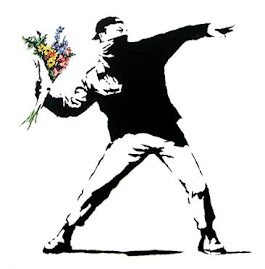31 October 2017. Five
hundred years since Martin Luther posted his “let’s get together and chat”
flyer in Wittenberg. When studying history,
we often point to particular incidents in which a movement began. That day is as good as any to be considered the
beginning of the Protestant Reformation, even though the groundwork had been in
preparation for many years prior.
Every five hundred years (or so), a dramatic shift can be
seen in philosophy, politics, theology, spirituality, and a variety of other human
endeavors. Today we are in what is often
called the Great Emergence. Referring to
the church, the late Phyllis Tickle spoke of a “500-year rummage sale.” Every half millennium, there’s a wholesale parting
with the old and a welcoming of the new.
(You know, one person’s trash is another one’s treasure!)
Today, a new awareness, a new consciousness is dawning. Global, not simply local, concerns are in
ascendance. This awareness was in
evidence throughout the 20th century, even the end of the of 19th. One notable event was the outpouring of the
Holy Spirit in the early 1900s, beginning the Pentecostal awakening. Another example can be seen in, with the
passing decades, a greater impetus to ecumenical and interfaith efforts.
Let’s go back 500 years from the Reformation. (And clearly, this is no exhaustive
presentation!) In the 11th century, the
Great Schism occurred. In 1054, the
church in the Roman west and in the Greek east officially split. As with the Reformation, there was a
constellation of factors involved. Over
the centuries, misunderstanding and mistrust grew between east and west. The Schism remains with us today.
Around 500, there is the fall of the Roman Empire in the
west. It would last for another 1000
years in the east, ending with the Turkish capture of Constantinople. There is the rise of monasticism in Europe,
along with the start of the Middle Ages.
A little later, Muhammad is born, with the religion of Islam as a
result.
With the dawn of the 1st century, we have the messianic
awakening, the advent of Jesus Christ, and the birth of the church.
Five centuries earlier, there is the flowering of the Hebrew
prophets. The temple and Jerusalem are
destroyed by the Babylonians. This
general time period is often called the Axial Age. Classical Greek philosophers like Socrates
and Plato are active. In China, we see
Confucius; in India, we see the Buddha.
Other parts of the world have their own awakenings in philosophy and
spirituality.
Around 1000 B.C.E., David establishes the Israelite kingdom. Solomon has the temple in Jerusalem
built. Going further back, the dates are
more subjective, but we have the earliest estimates of Moses’ life in roughly
1500 B.C.E., and Abraham’s five centuries earlier.
Okay, there’s a crude thumbnail sketch!
So, back to today, with the Great Emergence. One way
we can see this is with the effects of the internet. The French priest and paleontologist Pierre
Teilhard de Chardin spoke of the “noosphere”: the Greek word for “mind” plus
“sphere.” Vastly oversimplified, the
noosphere is the consciousness that is becoming increasingly more complex. It is a sphere, analogous to the atmosphere,
sort of like the information in the internet cloud.
But this sphere just isn’t mind; it is also spirit. I like to think of the Biblical image of the
ascension of Christ, the one who, as St. Paul puts it, “fills all in all”
(Ephesians 1:23). Perhaps we can see it
reflected in Hebrews 12:1, with its mention of the “great cloud of
witnesses”?
I’ll admit to uncertainty—mystery
is part of the appeal! After all, who knows what the Great Emergence has in store?
I’ll see you in 500 years to compare notes.











